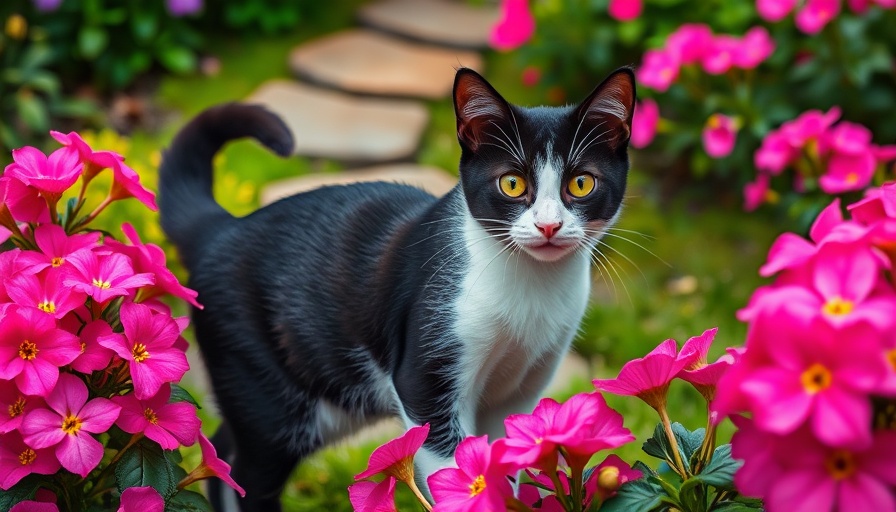
Understanding the Feline Intruder: Cats in Your Garden
For many, the sight of graceful cats slinking through the garden conjures images of whimsy and charm. However, for gardeners, these furry creatures can bring frustration and disruption. Often viewed as pests, cats are natural diggers and climbers, and they seem oblivious to the distinction between your prized plants and their personal litter box. Male cats are notorious for spraying and marking their territory, often transforming our cherished gardens into undesirable spots.
As a cat owner myself, I appreciate the joy and company they provide, but I understand the need to maintain a beautiful and healthy garden. With careful planning and a little creativity, we can navigate the challenge of deterring unwanted feline visitors while ensuring our gardens thrive.
Natural Solutions to Keep Cats at Bay
To create a sanctuary for our floral friends, let’s explore some effective and eco-friendly strategies to keep stray cats out of your yard. Making simple changes can significantly reduce the likelihood of cat intrusion.
Cover Soil: Lesser-Known Deterrents
Cats love nothing more than soft, loose soil to dig into. To make your garden beds less appealing, consider using chicken wire across the soil, which allows water and nutrients to get through but discourages cats from lounging. Adding sharp materials like thorny twigs or chunky rocks can further deter them. Egg shells, when scattered in the garden, not only act as a deterrent but can also provide calcium to the soil, enhancing its quality.
Incorporate Cat-Repelling Plants
Another ingenious tactic is to incorporate plants that cats find unappealing. Consider placing citrus-scented plants such as lemon balm, or strong-smelling herbs like rosemary or lavender in your garden. Cats tend to steer clear of these aromatic plants, allowing for a fragrant yet protective barrier around your flower beds.
Ground Cover: A Practical Layer of Protection
Creating physical barriers can be highly effective. Long-lasting mulch not only enriches the soil but can be used strategically to deter cats from digging. Using thick layers of mulch or sharp pinecones can create an uninviting surface for any trespassing felines, while also acting as a fantastic habitat for beneficial garden insects.
Water as a Deterrent: Natural Irrigation and Protection
Interestingly, cats don’t appreciate getting wet. Setting up a simple sprinkler system can help in repelling them. Motion-sensing watering systems can serve a dual purpose: helping to maintain your plants' hydration needs while also providing a deterrent that teaches these pets to stay away from your yard.
Connecting with Your Community: Collaborative Solutions
Engaging with local pet owners and community members is vital for finding solutions that work for everyone. Sharing tips, and resources or even organizing community workshops can spread awareness about how to keep gardens flourishing while considering our furry friends. Not only can this strengthen community bonds, but it also fosters an understanding that encourages responsible pet ownership.
Fostering Friendly Solutions
While it might be tempting to keep our gardens completely cat-free, consider creating designated spaces for them. If you’re open to it, coaxing cats to use an outdoor litter area can benefit both your garden and the local kitty population. By providing a safe, inviting spot for them, we can coexist harmoniously.
Wrap-Up: A Flourishing Garden Without Fuss
Incorporating these strategies can greatly enhance your gardening experience, allowing you to enjoy your outdoor space without the stress of feline disruptions. By creating a natural, welcoming environment and fostering community understanding, we can ensure that our gardens remain beautiful, thriving spaces for both plants and people.
 Add Row
Add Row  Add
Add 




Write A Comment